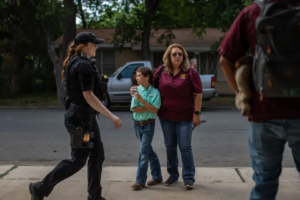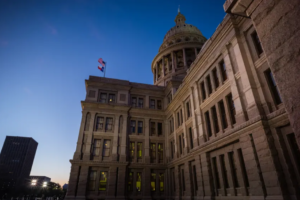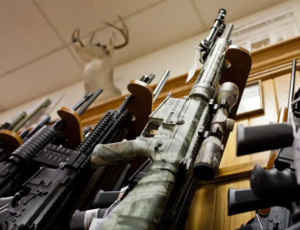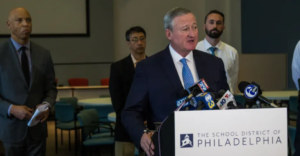Former San Antonio Superintendent Pedro Martinez took over Chicago Public Schools’ top job with a lengthy to-do list.
A month into the school year, he faces a slew of pressing tasks: ramping up the district’s COVID testing and contact-tracing programs, filling high-profile vacancies on his leadership team, striking an agreement and a more congenial relationship with the teachers union and responding to urgent calls for changes in the district’s special education program.
Martinez, who became the district’s CEO on Sept. 29, spoke with Chalkbeat Chicago this week about his longer-term vision for addressing the academic and mental health fallout from the pandemic.
So far, your press conferences and interviews have been dominated by questions about safety, and rightfully so — that’s critically important. But I hope we can shift gears and talk about longer-term academic and mental health recovery.
The federal government has given districts such as Chicago billions of dollars for pandemic recovery, without strings attached or with few reporting requirements. How will Chicago Public Schools measure whether its spending is paying off for students, and how will it keep itself accountable?
Coming to Chicago, my immediate work is still driven by safety concerns. For me, it’s very clear: The schools are safe. But there’s still some anxiety to reduce. So that is my priority right now. What I want to pivot to is really understanding the plans schools have around recovery. The good news is, when I look at our attendance, it is actually at a reasonably high level.
In CPS, we didn’t get to assess any of our remote students last year. In my former district, we assessed almost all the remote students. I have at least a sense of what our children went through academically, which is a significant drop — as much as a 30-point drop in proficiency in some grades. My goal is really looking at what resources schools have right now.
We are hearing quite a bit about concerns around social-emotional wellbeing as well as mental health. I was at Simeon (Career Academy High School on the South Side, which lost two students to gun violence in September) yesterday. They have two social workers and a mental health clinic on site. That’s a great model. So one of the questions I have on Day 6 on the job: How do we scale up those types of services? What are the partnerships that exist with our local community health agencies? I see the federal funding as an opportunity to look at areas that we may want to redesign, areas we want to improve. There are a lot of areas where I still want to go a little deeper, like special education. What are some of the challenges that exist with services and academics?
The previous CPS administration made a plan for spending the federal pandemic relief dollars this year that’s conservative about adding staff and intent on spending the money gradually over several years. The teachers union has called for hiring more support staff and educators, and spending more of the money now. In San Antonio, you did hire more staff with the federal funding. How might you shift Chicago’s approach?
In San Antonio, we planned out the funds over four years. We did that so that we didn’t have a significant cliff. That gave us more confidence to hire additional teachers and social workers because we could commit that those resources would be in place for four years. I’m hopeful that with the Biden administration, there is a significant push for more investments in Title I funding. That’s our avenue to sustain our social workers and the roles we added to reduce class size in San Antonio.
So when I think about CPS right now, it should be a multiyear approach. I actually do appreciate that we were a little more conservative this year because it allows me to go in and see what the gaps are. We need to make sure we know where our children are at. It’s not about whether you’re a fan of standardized testing or not. Because in Texas they did testing, academic plans were personalized for each child. Programs were customized to the children who struggled the most. The approach that I want to bring is that as we plan next year, let’s have our teachers and our parents really drive that — because who knows better what our children went through last year than both our teachers and parents?
Speaking about where students stand academically, schools have started assessing math and reading using new Star 360 assessment. Will the district track this data centrally so we could get a fuller picture? Or will the effort to gauge students’ academic needs look different from school to school?
That’s one of the things I am still learning about on Day 6. Over the summer, the school board removed the NWEA tests — once a consistent assessment across the district that’s now optional. That’s taking me down a different path with our new curriculum system, seeing what assessments are in place and what kind of data we are collecting. It’s October. So I’m already thinking of how we’re going to plan not only for the second semester, but also for next school year.
At Chalkbeat over the past year, we worked on a project that drilled down on the pandemic’s impact on Black and Latino boys and young men. This is a group of students district officials had said even before the pandemic they wanted to prioritize, but we haven’t heard about specific strategies or an overarching plan. You said this is a priority as well. What’s your plan?
It starts with making sure our children have access to high-quality preschool programs. I’ve always seen a high-quality literacy program here in CPS, developed over years. I think that’s something that we just have to double down on. We know that when our boys are not literate by a certain grade level, you start seeing discipline issues. And there’s a lot of research that shows how literacy is very connected to math. With COVID, where we saw the biggest challenges was in math and science. I’m going to dive deeper in our district to make sure we are providing extra supports in math and science.
In Chicago, we know how to create high-quality programs. I was at Kenwood (Academy High School on the South Side), and when you look at their stats, it’s just impressive. I just celebrated a National Blue Ribbon School recognition for Prosser (Career Academy High School on the Northwest Side). One of my personal goals is to study every neighborhood, and ask, “How many high-quality programs do we have in each neighborhood?” I was here back in 2003 to 2009, when a lot of these programs were being developed. The result was very rich programming, very high-quality. But my question right now as I get to come back 12 years later is whether they had the unintended consequences of creating inequity in terms of access for children.
Let’s talk more about mental health. You mentioned visiting Simeon on the heels of its students’ deaths. At Jensen Elementary, two mothers died of COVID last month. Students’ mental health needs are higher than ever. What are your thoughts on the district’s federally funded mental health initiative, and how you can build upon that as the new CEO?
For me, that is a high priority. I’ve been on several national panels with specialists who say, “My middle-class families and my upper-income families — non-stop calls for more and more services. My lower-income families — I didn’t get a call at all.” It made me sad because those families don’t feel like they can get help. They don’t know how to get help. In CPS, it has to be all the above: hiring social workers and other staff, having on-site clinics, leveraging community agencies. A Simeon student said it best to me yesterday. He said, “You know, it’s not easy for us to go get help. But I love the fact that it’s here. For myself and a lot of my friends, there’s still a lot of stigma.” Let’s put the resources both in the community and in the schools, talk about it, make people feel safe about seeking that help.
Unless we address these issues, I do worry about having more discipline issues, especially with our boys. At the younger grades, you’ll see children act out. At the older grades, they fight. I am asking high schools I’m visiting whether they’re seeing an uptick, and the short answer is they are.
The goal for me right now is to have a strong second semester. With vaccines for 5- to 11-year-olds now on the horizon, I am optimistic that in the second semester, my full attention is going to be on academics, as well as mental health and social emotional wellbeing because they are all intertwined.
This article was originally posted on New CEO Pedro Martinez on how he plans to help Chicago students recover






Be First to Comment